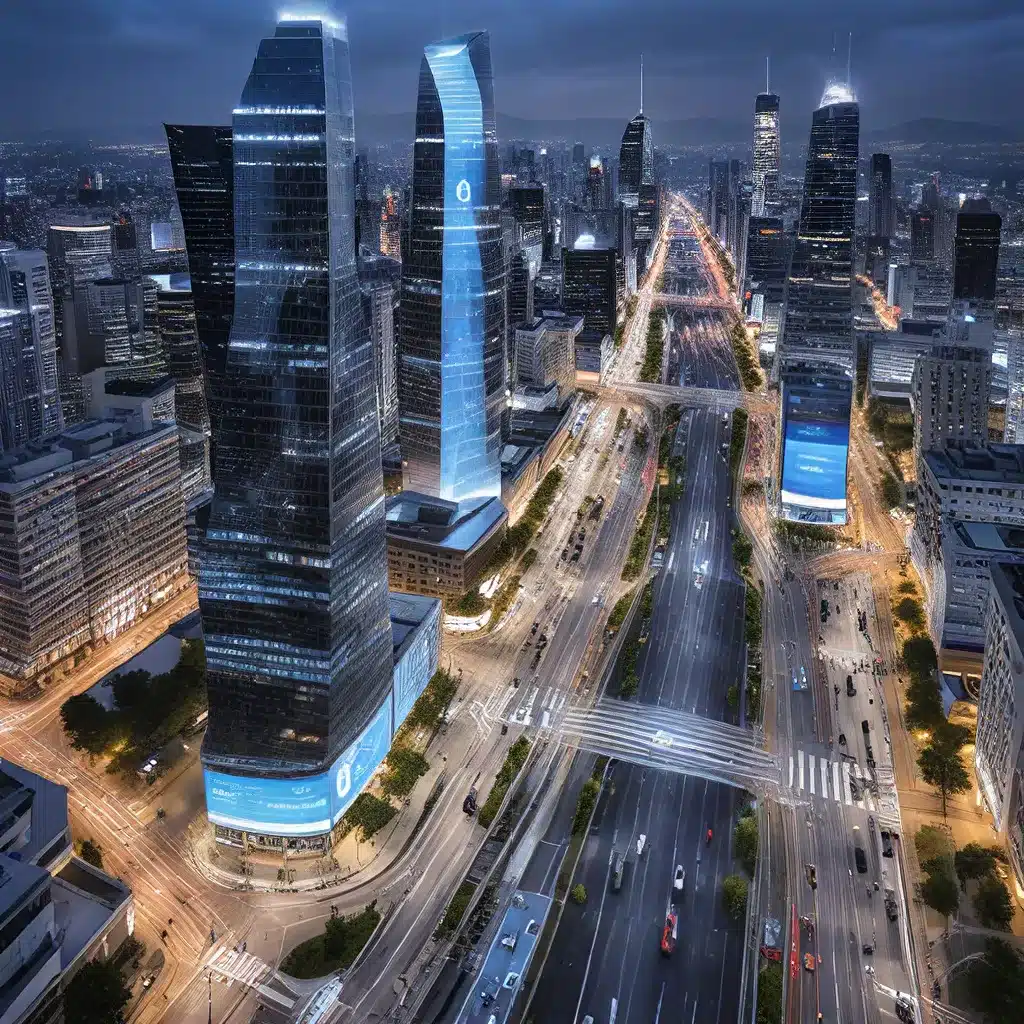
The Foundation of Smart Cities: Sensors Unleashed
At the heart of the smart city revolution lies the strategic use of sensors, which act as the eyes and ears of the city, gathering real-time data to enhance urban planning, resource allocation, and overall efficiency. These small, interconnected devices, equipped with technologies like cameras, motion detectors, and temperature sensors, are deployed throughout the city to monitor and collect data on a wide range of parameters, including traffic flow, air quality, waste levels, energy consumption, and pedestrian footfall.
The Internet of Things (IoT) and the proliferation of interconnected devices have been the driving force behind the emergence of smart cities. By harnessing the power of this technological ecosystem, cities can create an integrated urban environment that leverages data-driven insights to address pressing challenges and improve the quality of life for their citizens.
Smart Mobility and Traffic Management
One of the significant hurdles faced by modern cities is the issue of traffic congestion. Smart cities have risen to the challenge by employing a network of sensors to monitor traffic conditions, analyze data in real-time, and optimize traffic flow accordingly. Dynamic traffic lights, for instance, can adjust signal timings based on the density of vehicles on the road, reducing wait times and easing traffic snarls.
Smart parking systems also leverage sensor technology to guide drivers to available parking spots, reducing the time spent searching for a space and decreasing overall traffic congestion. By integrating these sensor-driven solutions, smart cities are tackling the pervasive problem of mobility and transportation, creating a more efficient and less-congested urban landscape.
Efficient Waste Management
In traditional cities, waste collection often follows rigid schedules, leading to overflowing bins or underutilized waste collection vehicles. Smart cities have tackled this issue by implementing sensor-based waste management systems. Sensors installed in waste bins detect their fill levels and relay this information to a central system, enabling optimized waste collection routes. This data-driven approach reduces fuel consumption and minimizes unnecessary waste collection trips, contributing to a more sustainable and efficient waste management system.
Energy Conservation and Sustainability
Sensors play a crucial role in energy management within smart cities. Smart streetlights equipped with motion sensors can adjust their brightness based on the presence of pedestrians or vehicles, saving energy during low-traffic hours. Similarly, smart buildings equipped with smart meters can monitor real-time energy usage and identify areas for energy efficiency improvements. This data empowers city authorities and citizens to make informed decisions about energy consumption and conservation, driving towards a more sustainable future.
Enhanced Safety and Security
Safety and security are paramount concerns in any urban setting, and smart cities have leveraged sensor technology to enhance public safety. CCTV cameras with video analytics can detect unusual activities or identify traffic violations in real-time, enabling immediate response from emergency services. Smart surveillance systems integrated with these sensors provide a comprehensive security infrastructure, helping to prevent and respond to incidents such as accidents or criminal activities.
Citizen-Centric Approach
A smart city is not just about data-driven efficiency; it also aims to improve the quality of life for its citizens. Citizen-centric applications, accessible through smartphones or other devices, allow residents to engage actively with city services, fostering a sense of community and participation. These applications provide real-time updates on public transportation, air quality, and upcoming city events, empowering citizens and creating a more inclusive and responsive urban environment.
The Future of Urban Living
The future of urban living is evolving rapidly with the advent of smart city design powered by sensor technology. By intelligently harnessing data and real-time insights, cities can optimize resource allocation, reduce environmental impact, enhance safety, and improve the overall well-being of their citizens. As more cities around the world embrace this transformative approach to urban planning, the dream of a smarter and more sustainable future draws closer to reality.
With sensors as the guiding force, smart cities will undoubtedly continue to shape the landscape of our urban experiences, forging a path towards a technologically advanced and interconnected world. The sensor-powered city of the future promises a better quality of life, greater efficiency, and a more sustainable urban environment, transforming the way we live, work, and interact within our cities.
Explore the possibilities of sensor networks and their impact on the future of urban living by visiting sensor-networks.org, where you can delve into the latest innovations, case studies, and expert insights shaping the smart city revolution.